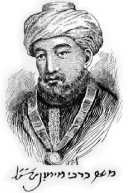The Enigmatic Odontogenic Keratocyst: A Cross-sectional Study of Odontogenic Cysts and Tumors using Ki-67
Pretty Prince Panakkal, Pramod Philip Matthews, Soma Susan, Nivia Mahadoon, Pinky Varghese, and Afshan Pallikkalakathu
AbstractBackground: An odontogenic keratocyst is presently considered a cyst by the 2017 World Health Organization (WHO) classification, even though, at times, it shows highly aggressive behavior and a high recurrence rate. Ki-67 is a protein associated with the proliferative activity of the intrinsic cell populations. In tumors, Ki-67 is associated with tumor aggressiveness. This study aimed to compare the Ki-67 expression rates of odontogenic keratocysts to those of other odontogenic cysts and normal mucosa.
Materials and Methods: A retrospective cross-sectional study was conducted using pathology samples retrieved from the archives of a tertiary care center to evaluate Ki-67 expression. Histopathologically confirmed cases of odontogenic keratocysts, radicular cysts, dentigerous cysts, and ameloblastomas were selected. The standardized immunohistochemistry streptavidin–biotin detection system HRP-DAB method was employed for analysis.
Results: All the odontogenic keratocysts pathology samples demonstrated some degree of Ki-67 expres¬sion: mild, moderate, and severe Ki-67 expressions were identified in 26.7%, 53.3%, and 20.0% of the samples, respectively. Compared to the odontogenic keratocyst samples, the samples from dentigerous cysts, periapical cysts, ameloblastomas, and normal mucosa demonstrated no Ki-67 expression in 33.3%–66.7% of the samples, mild expression in 13.3%–40.0%, moderate expression in 0%–33.3%, and severe expression in none of the samples (P<0.001).
Conclusions: Ki-67 was either moderately or severely overexpressed in the majority of odontogenic keratocyst samples. The 2017 WHO classification, which reclassifies keratocystic odontogenic tumors as cysts, conflicts with our findings.
Rambam Maimonides Med J 2025;16(3):e0014
